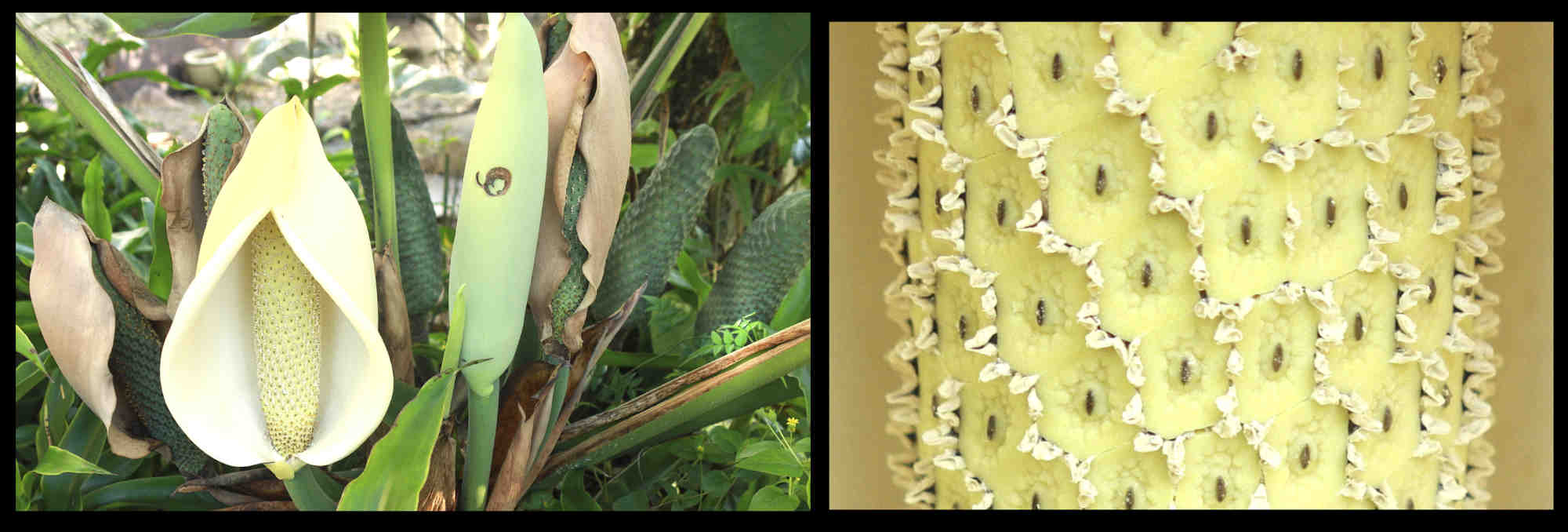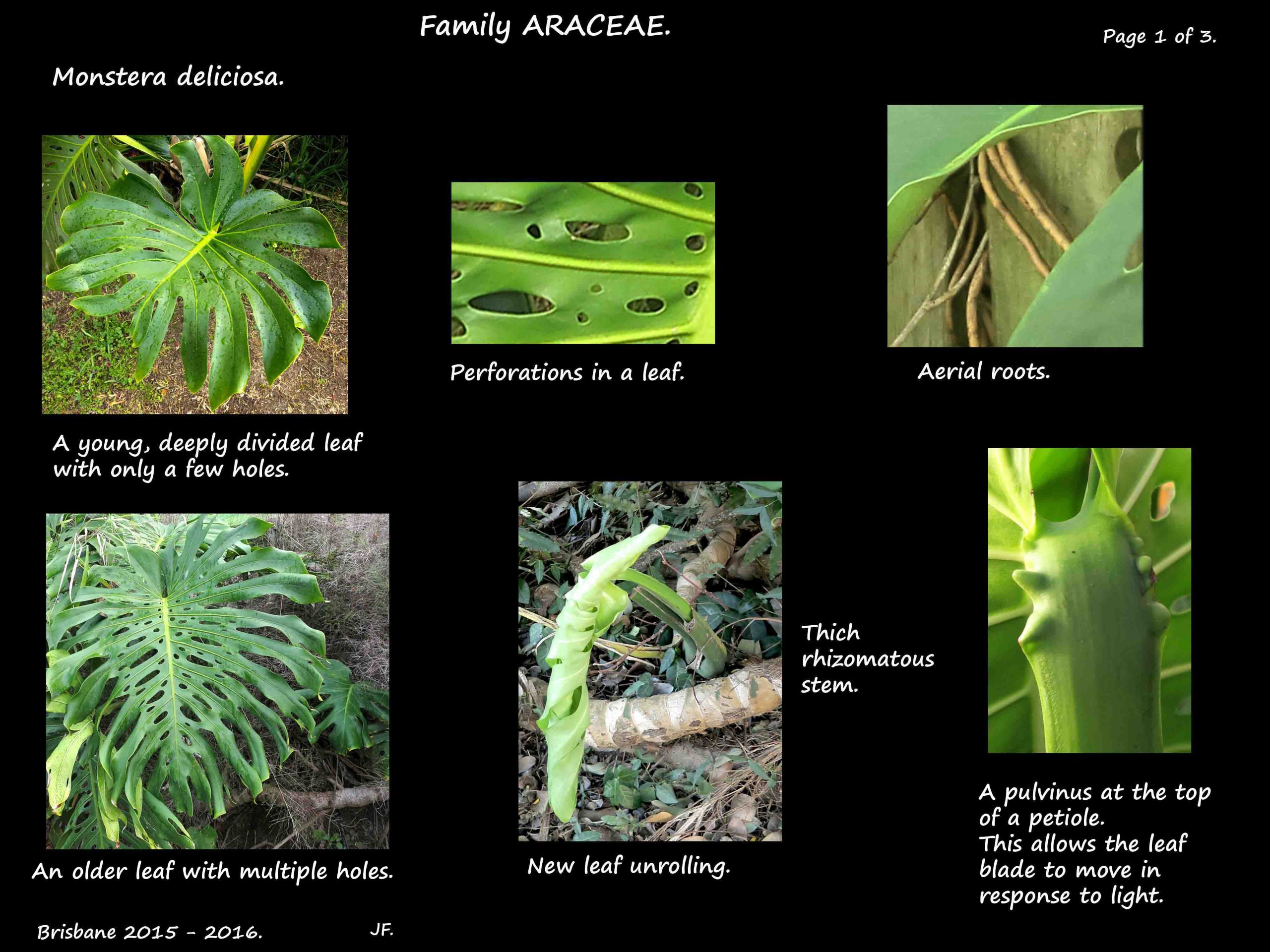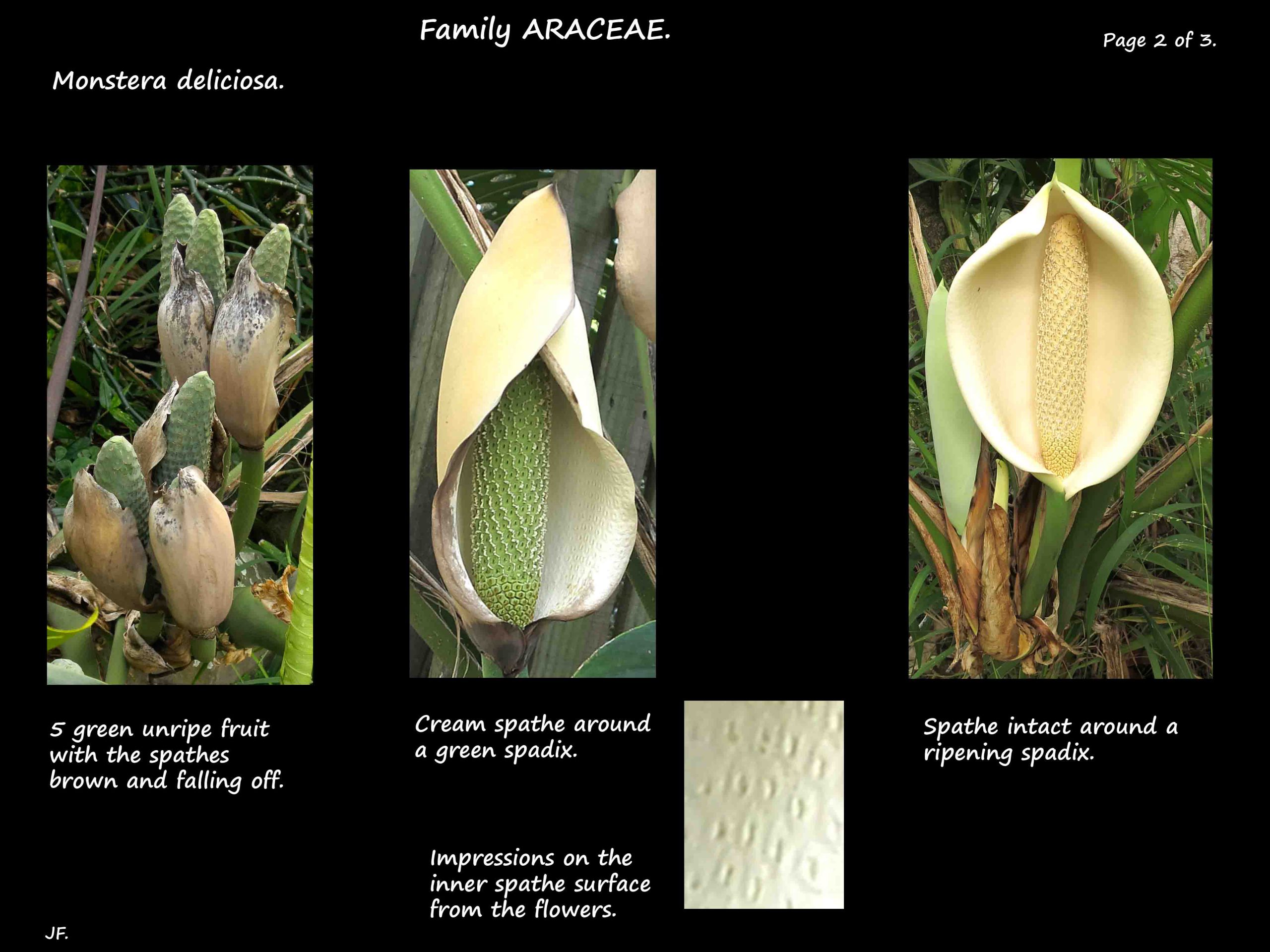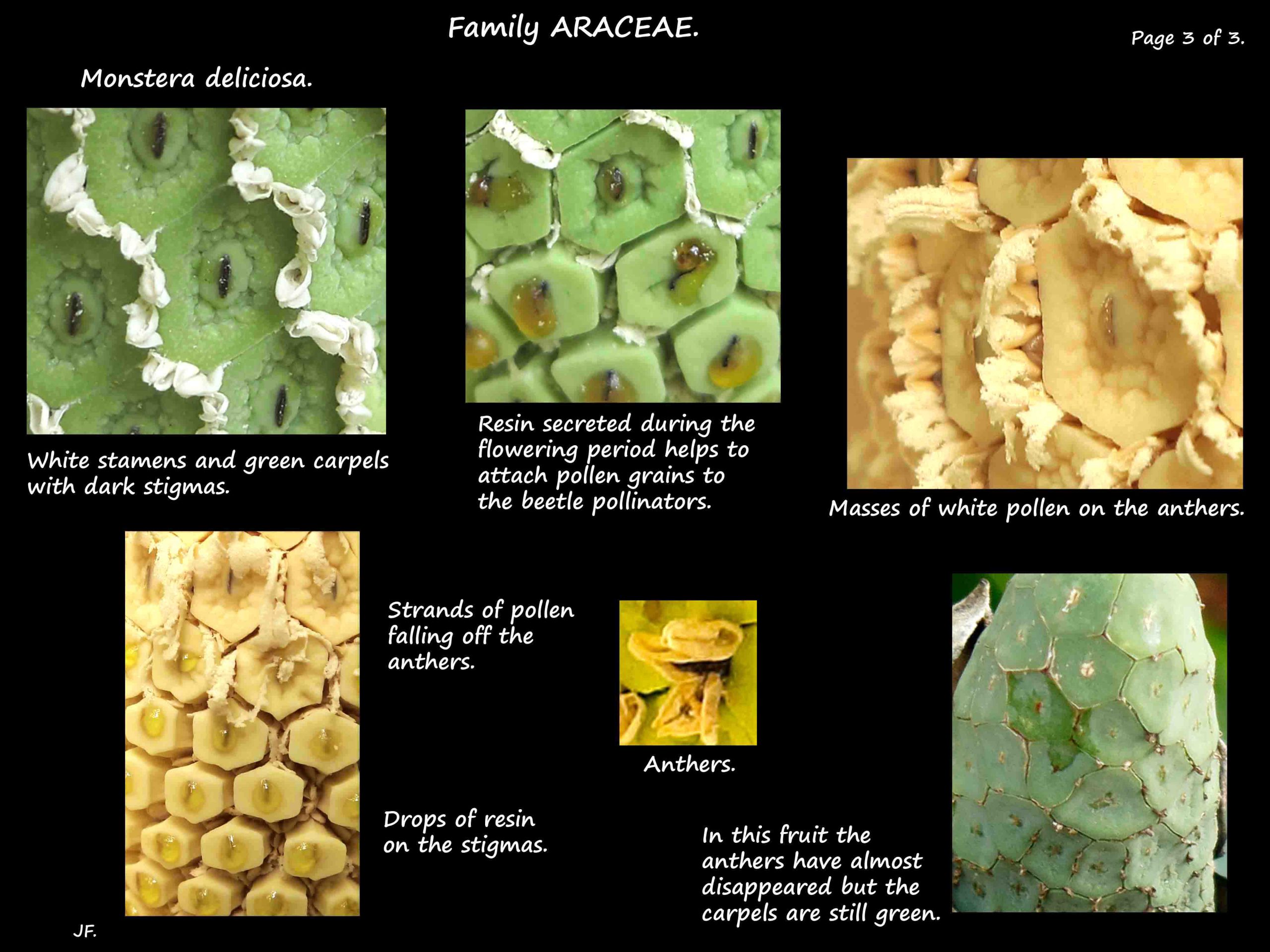Monstera deliciosa.
Family Araceae.
Known as the Swiss cheese, Fruit salad or Monster plant among many other names.
They are closely related to Philodendrons and are also known as the Split leaf philodendron.
A common garden plant in Queensland, it is naturalised in some areas and has become a weed.
An evergreen, terrestrial vine that can grow up to 20 m by scrambling over any supports and also by
using its aerial roots.
It has thick rhizomatous stems from which the long aerial roots arise.
The leaves are deep green, glossy, heart-shaped and up to 1 m long by 75 cm wide.
They are on long petioles.
The blade is deeply divided and, in older leaves, it becomes perforated by an increasing number of holes.
The multi-flowered inflorescence is a spadix up to 15 cm long.
It is initially enclosed by a special bract called a spathe that is cream to white and velvety.
The spathe is deciduous becoming dry and brown then falling off.
The spadix is covered with small, tightly packed, spirally arranged, bi-sexual flowers.
The flowers have no stalk or perianth.
The single, hexagonal carpel, with a slit-like stigma, is surrounded by the stamens.
During flowering a clear resin is secreted which browns when exposed to air.
Resin is also produced by Philodendrons.
Reproduction is usually vegetative rather than by seed.
The fruit, consisting of multiple berries, is up to 25 cm long and covered with green, hexagonal scales
which eventually fall off to reveal the ripe cream fruit.
It can take over a year to ripen.
The edible fruit tastes like pineapple and bananas.
There is a variegated cultivar with cream markings on the leaves.
J.F.





